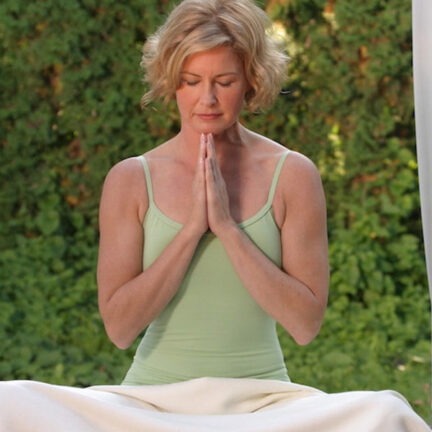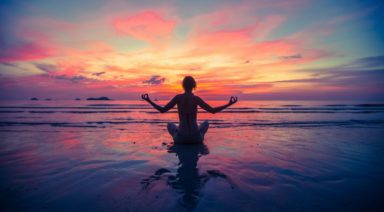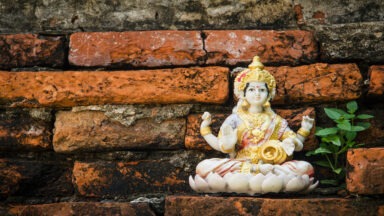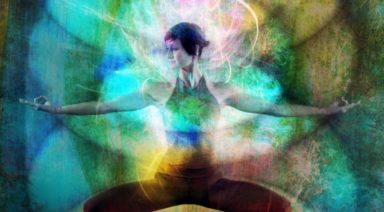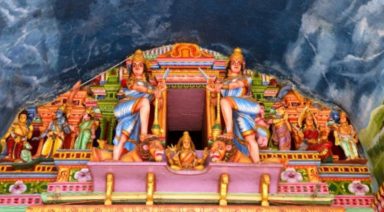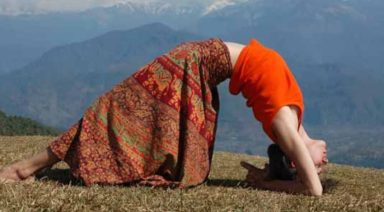What is the Meaning of Yoga?

In 1999, I was on a plane flying home from India, after nine years of living in the Himalayas. I’d been meditating, studying meditation, practicing yoga and living the everyday bliss of self-awareness. On the plane I picked up a glossy magazine and was amazed to see photos of North Americans practicing power yoga poses and talking about how yoga is good for getting a fit body. Now, I agree that yoga is great for your body and your health, but I had to giggle at how differently I’d learned the purpose and meaning of the Sanskrit word ‘yoga’. In India, yoga has been studied and practiced for thousands of years, but it’s not the look of the physical body that is the main aim of yoga there.
Yoga, in Sanskrit, means to completely know yourself and to be at peace in yourself. It is not possible to define this peace except to say it is freedom from all suffering, freedom from doubt and freedom from confusion. A natural blessedness unfolds in you as you feel this peace and you increasingly realize this as the core essence of your life. This realization is called yoga: a clear knowledge of the oneness of your self with the source of all life.
Being established in this knowledge, your life starts to flow with a vital freshness and harmony, with clarity, mental alertness and a fullness of loving understanding. This yoga state is expansive, creative and life-supportive.
You might doubt that this kind of expanded awareness is possible for anyone but a Himalayan sage; but yogis, including myself, have found that self-knowledge is a natural state and is possible! Our consciousness is self-reflective; in other words, you have the capacity to know the essence of your own life and mind. This potential has been researched for thousands of years by meditators. Yoga is an exploration into this nature of consciousness and existence. Yogis have discovered, through deep personal inquiry that at the root of their own life exists freedom and an ever-present space.
But how, you might ask, is this relevant to the everyday life that I live? Once you understand that life’s activities, situations and happenings never alter your essential unchanging existence, your ego doesn’t have to prove its superiority, nor believe in thoughts of inferiority. This pure space of yourself is not affected by praise from anyone, nor is it diminished by criticism. Imagine the relief of living with this sense of perfect ease!
In this state of awareness, the body and mind continue to function perfectly of course, but you don’t need to believe all your thoughts or reactions. One benefit is that negative and painful thoughts in your mind such as anxiety, anger, fear, neediness or confusion no longer seem so real. When ideas are not repeated or re-enforced, after time, they just go away! Try it and see for yourself!
A yogi is someone who engages in practices in order to realize this essential existence and their own potential power of awareness. It’s great to have a healthy body, but this awareness is real power yoga!
What is Tantra Yoga?
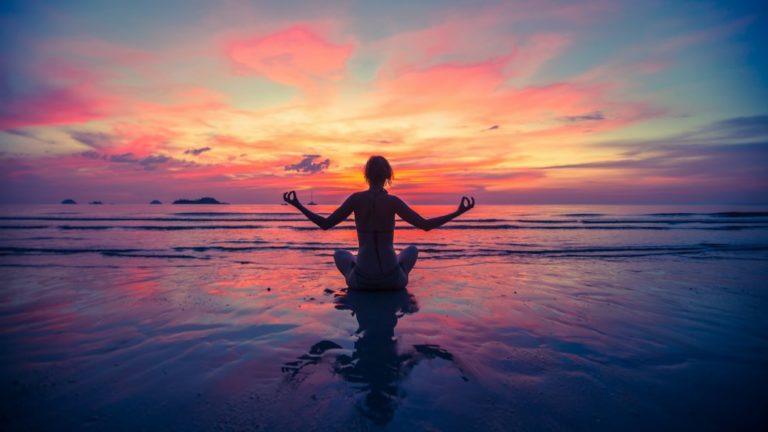
If the word Tantra conjures up scenes of sexuality, you’re not alone. The introduction of Tantric practices in the West has inadvertently become identified with a practice that’s laced with nudity, sexuality, and occasionally, promiscuity.
The truth is, Tantra may enhance your sex life, but only by deepening your connection to your energy and your body first. Although Tantric practices are founded on the principle of intimacy, intimacy is not purely physical. It’s the act of connecting so deeply that you feel as if you are getting a glimpse into your and perhaps another’s soul.
I’ve heard it described as “into me I see” based on the premise that we must gain an awareness of our true selves before we can forge the path of union with others.
What’s the point of Tantra Yoga?
The purpose of Tantra Yoga, is to further emotional wellbeing, aiding spiritual and physical health.
The exploration of the subtle energies within the body and their connection to the universe provide the opportunity to understand the purpose of life and the principles of union in new dimensions.
Rod Stryker, a prominent teacher of Tantra Yoga, describes the intention of Tantra Yoga, “(it) shows us what is blocking us from thriving and offers techniques that will help us attain spiritual and material prosperity.” Hence the goals of the Tantric practices are to enable us to prosper, to thrive and to merge the spiritual world and the material world into one.
What is Tantra Yoga?
The word Tantra means, “to weave or expand.” The root of the word yoga is “yuj” which means, “union.” Similar to some of the other 8 Forms of Yoga, Tantra Yoga blends elements of Raja, Bhakti, Karma, Kundalini, and Hatha practices. What distinguishes it from others is that it also weaves dynamics of other mystical practices as well such as: astrology, Ayurveda, crystals, and gemology to name a few. In utilizing these aspects, the Tantric practice aims to expand beyond perceived limitations of yogic philosophy and the asanas.
The comprehensive approach of Tantra Yoga incorporates conscious breathing practices, pranayama, and meditation, and may be practiced individually or in partnership with another. In both practices, the relationship between the micro (self) and the macro (others) is enhanced.
Vinyasa, as a moving meditation through postures, or asanas, also may be practiced partnering, as a blending of energies or as a sole practitioner. The aim is the same: to gain awareness of our strengths and weaknesses, the places where we resist union with ourselves and others, and cultivate the ability to consciously respond rather than unconsciously react to both our fears and desires. When that occurs, we reach a state of eternal bliss.
Five Tantra Yoga Practices
1. Peace Pose with Pranayam, Conscious Breathing
Begin in a cross-legged seated position, Sukhasana, or peace pose. Gaze down; if knees are higher than hip creases, sit on a yoga block or rolled up yoga mat to elevate the spine.
For solo practice, place hands in gyan mudra (also referred to as jnana mudra in some practices) with the tip of the index finger touching the tip of the thumb, extending out the other three fingers with the palms facing up and resting on knees or thighs. Gyan mudra, a yogic shape for the hands, is considered the prime mudra with many health and grounding benefits.
If practicing with a partner, sit back to back in peace pose, sukhasana. You’ll want to align your spines: start by scooting your seats as close to one another as possible. Option to use prithvi mudra, tips of the ring fingers touching the tips of the thumbs, remaining three fingers outstretched but relaxed. This mudra creates a circuitry igniting the heart meridian, or line of energy that extends from the ring fingers, extends up through the arms and confluences at heart center in both the front and backside of the chest.
Take five full breaths, focusing on smoothing out the length of the inhale to match the same length on the exhale.
2. Sun Salutations, Surya Namaskar
Start in mountain pose (tadasana/urdhva hastasana), standing at the top of your yoga mat. As an individual practice, you may like to practice facing a full-length mirror. In a partner practice, you could either practice facing one another or side by side. Bring palms to meet at heart center in anjali mudra (prayer gesture) or place one hand on your heart, and one on your partner’s heart. Take five deep breaths.
Extend arms overhead, mountain pose, then bow forward, keeping your heart open and gaze forward, and release your head into a forward fold (uttanasana). Bring hands to shins or thighs and lengthen through your spine for a halfway lift (ardha uttanasana). Repeat three times.
3. Modified Side Plank/ Partner Modified Side Plank Pose
Start in table pose, wrists aligned under shoulders, hands spread wide, and hips stacked over knees. For partner modified plank pose, you can lightly touch the crown of the head with one another while in table. Then extend your right shins behind you, toes curled under as you root right hand into the mat and open your chests towards one another.
For an individual practice, bring your left hand to rest over your heart as you stack your left shoulder over right so your heart is wide open. Your hips are also stacked creating a beautiful opening for what are considered our more vulnerable energetic centers: hips and hearts. In partner practice, connect left palms overhead. Enjoy five breaths. Return to table and then switch sides.
4. Partner Peace Pose, Entwined Sukhasana
Come into a loose, cross-legged position (typically the larger person in sukhasana first). Your partner then sits on your thighs and crosses their ankles behind your back. Touch your third eye centers (space between the eyebrows) as you both lengthen through your spines. You may choose to close your eyes or gaze lightly into each other’s eyes as you inhale and exhale through the nose. Take five breaths, allowing a natural synchronicity of breath, with your palms resting on the backside of your partner’s heart. Surrender to the intimate experience of both your and your partner’s heartbeat.
5. Child’s Pose (Balasana), Partner Child’s Pose
Bring your knees wide to the edges of your mat, fold forward resting your forehead on the mat, arms extended overhead but resting on the mat. (If knees are sensitive, you can place the folded edges of a blanket behind your knees before folding forward or rest your seat and perhaps forehead on yoga blocks.) If shoulders allow, bring your palms to touch in prayer, symbolic of union with all aspects of yourself.
For partner child’s pose, assume the same shape described above, with heads pointed towards one another. With arms outstretched, you can place your left palm down, and your palm up to connect with your partner’s palms. It’s said that our hands are an extension of our hearts. Envision your inhale emerging from your left palm, breathing in the essence of your partner, and exhaling through your right palm, sharing your essence with your partner.
For a more advanced practice, presuming both partners have healthy knees and spines, you may like to have one partner (typically the larger partner) stay in child’s pose, and the other, sit facing the opposite direction, on the low back of the partner in child’s pose. Slowly, keeping weight in your feet, begin to lower down, using the support of hands on the mat alongside the bottom partner’s hips. Eventually, lower your spine to align with the partner in child’s pose, and relax arms alongside, or extend your arms overhead, sliding palms underneath your partner’s palms.
Stay in close communication with your partner in child’s pose to ensure that each of the actions feels safe and available in their body.
Expand Your Capacity For Intimacy
If you’re practicing Tantra Yoga on your own or with a partner, you’re expanding your capacity for intimacy and union. With practice, we’re able to get up close and intimate with the beliefs and behaviors that hold us back from the intimacy we desire. In addition, Tantric techniques are provided to evolve beyond these barriers so that each and every one of us may thrive and prosper.

